Small Group Experiential Travel
Tour Code
PL5
Start
Krakow (KRK)
End
Helsinki (HEL)
Tour type
Cultural
Max Group Size
18
When To Go
May, Sep
Activity Level
2 - Moderate
Overnight in
Tallinn, Helsinki, Riga, Vilnius, Warsaw, Krakow, Gdansk, Torun, Olsztyn
- Overview
- Info & Inclusions
- Itinerary
- Map & Hotels
- Photos
- Dates & Prices
Highlights
- Torun, home of Copernicus
- Well-preserved Krakow
- Wieliczka salt mines tour
- Cosmopolitan Riga
- Tallinn: one of Europe's best preserved old towns
- Helsinki: 'Daughter of the Baltic'
Description
Poland & Baltic States tours like no other! Eastern Europe holds numerous rewards for anyone who is not shy of adventure.
Poland has an immaculate scenery like nowhere else and its glorious structures, still standing form a distant history, are spectacles we will never forget.
The closer we get to the Baltic Sea, the closer we move along the storyline to the Lithuanian, Latvian and Estonian legacies.
The cathedrals of Vilnius, Lithuania, hold stories of royalty and sainthood that live on in the collections of religious icons and artwork.
Walk the streets of Latvia and learn about the evolution of architectural styles and how the city has come so far in terms of development.
The Toomkirik Lutheran Cathedral in Tallinn, Estonia, is home to many legendary tombs and we will be captivated when our tour guide regales us with the tales behind these remains.
While Helsinki, Finland, is a relatively young capital, from a European perspective, we will still enjoy the vibrancy of the present as we walk along the markets that sit along the harbour, or admire the stonework of the government buildings.
Poland has an immaculate scenery like nowhere else and its glorious structures, still standing form a distant history, are spectacles we will never forget.
The closer we get to the Baltic Sea, the closer we move along the storyline to the Lithuanian, Latvian and Estonian legacies.
The cathedrals of Vilnius, Lithuania, hold stories of royalty and sainthood that live on in the collections of religious icons and artwork.
Walk the streets of Latvia and learn about the evolution of architectural styles and how the city has come so far in terms of development.
The Toomkirik Lutheran Cathedral in Tallinn, Estonia, is home to many legendary tombs and we will be captivated when our tour guide regales us with the tales behind these remains.
While Helsinki, Finland, is a relatively young capital, from a European perspective, we will still enjoy the vibrancy of the present as we walk along the markets that sit along the harbour, or admire the stonework of the government buildings.
Price includes
- Breakfast and dinner (hotels & local restaurants) daily. All accommodation, transport (including internal flight), sightseeing and entrance fees for sites noted as 'visited' in the detailed itinerary. Gratuities for local guides, drivers, restaurant staff, porters. Airport transfers for land & air customers and for early arriving / late departing land & air customers who book their extra hotel nights through us.
Exclusions
- International airfare to/from the tour. Tour Leader gratuities, lunches, drinks, personal items (phone, laundry, etc), domestic and international air taxes (if applicable), excursions referenced as 'optional'. Airport transfers for Land Only customers. Our post-reservation trip notes offer further guidance on optional meal costs and shopping.
Trip Info
- Seasonality and Weather:
This tour is offered in spring, summer and fall the most popular of which is are spring and fall when temperatures are relatively mild and crowds thinner. Showers quite possible in spring and fall, somewhat less so in summer though can occur any time. Summers can be humid though long daylight hours maximize exploration. - Transport and Travel Conditions:
Land transport throughout by private air-conditioned motor coach, 24-36 seats depending on ultimate group size (see 'group size'). Though we will have a couple of full bus days there are plenty of stops of interest. Hydrofoil crossing to Finland.
This trip is typical of most of our European tours, which are ambitious and involve full days of travel and sightseeing. While we don't have any actual strenuous activity (ie hiking) built into the program, you will do a lot of walking on this trip. These walks will mostly be in the form of walking tours of towns and cities and short walks to dinner. Being Europe, and a hilly/mountainous area, cobbles, uneven surfaces, and slopes/stairs are common. If you are accustomed to typical "bus tours," which rely heavily on vehicular transport for all sightseeing activities, you should be aware that this tour is considerably more active.
Am I suitable for this tour? Please refer to our self-assessment form - Accommodation:
Well-located, air-conditioned, mid-range hotels (3 star) throughout. Many are smaller properties (3-4 story) that may not have elevators. All hotels have en suite bath, though most have shower only. Porter service is rarely available; you MUST be independent with your luggage. Single rooms are limited and likely smaller than twins. - Activity Level: 2
These are particularly busy tours that feature a lot of moving around, sometimes by train and short journeys on local transport. Walking tours of towns and cities are leisurely but you should be prepared to be on your feet for several hours. Some of our cultural trips that occur at high altitude and/or require greater independence with baggage handling (at hotels, airports, train stations) also fall into this category.
To learn more about the Activity levels, please visit our tour styles page. - Staff and Support:
Tour Leader throughout, driver, local step-on guides in various locales. - Group Size:
Maximum 18 (plus Tour Leader)
Download Itinerary
- Day 1:Arrive in KrakowArrival in Krakow.
Krakow is one of the most beautiful cities in Europe. It was originally the home of the Polish royalty (between 1038 and 1596), before the capital was moved to Warsaw. The cobblestone streets, majestic churches (almost 100!), and old world charm make Krakow an unforgettable destination.
Overnight in Krakow.
Included Meal(s): Dinner - Day 2:Krakow: City Walking TourKrakow is very compact, and the whole central region with its cobblestone streets is full of well-preserved architecture, Gothic churches and splendid museums. On our sightseeing tour (largely on foot at a leisurely pace) we visit Wawel Hill with the Royal Castle, Market Square, and the 16th century Renaissance Cloth Hall. We continue onward to Jagiellonian University and St Mary's Church with the Wit Stwosz altar. This was designed in 1489 by Wit Stwosz of Nuremburg and is the finest sculptural work in Poland.
We then stroll down the hill from the castle complex and enter the Old Town, one of the most famous old districts in Poland and the centre of Poland's political life from 1038 until King Sigismund III Vasa relocated his court to Warsaw in 1596. The entire medieval old town is among the first sites chosen for the UNESCO's World Heritage List. The district features the centrally located Rynek Glowny, or Main Square, the largest medieval town square of any European city. There is a number of historic landmarks in its vicinity, such as St. Mary's Basilica (Kosciol Mariacki), Church of St. Wojciech (St. Adalbert's), Church of St. Barbara, as well as other national treasures.
While in Krakow, we'll also have a walking visit of Kazimierz, once an independent town governed separately from Krakow until the late middle ages. Later, it became known as the Jewish Quarter of the city and was finally transformed into a center for Krakow’s beatnik bars and cafe culture.
Overnight in Krakow.
Included Meal(s): Breakfast and Dinner - Day 3:Oskar Schindler Museum & Wieliczka Salt MinesThis morning we visit the Oskar Schindler's Factory Museum. The story of Oskar Schindler and his employees is one which has been well-known since the book and film by Thomas Keneally and Steven Spielberg (whose film 'Schindler's List' was shot almost entirely in Krakow). Individual histories of Krakow's wartime inhabitants guide visitors through the exhibit which covers the war of 1939, everyday life under occupation, the fate of the Jews and the city's underground resistance using vast archival documents, photos, radio and film recordings, period artifacts and multimedia.
After a break for lunch featuring Polish specialties,* we'll embark on a truly unique adventure: a descent into the Wieliczka Salt Mines. This isn't your average mine tour. Prepare to be amazed as we journey 5 kilometers (3 miles) beneath the earth's surface, exploring a world sculpted entirely by salt.
We'll wander through a labyrinth of salt-formed caves and grottoes, each with its own unique character and charm. Our descent will lead us to a mesmerizing subterranean lake, its surface reflecting the eerie glow of the mine lamps. And, perhaps the most awe-inspiring sight of all, we'll visit a chapel adorned with intricate sculptures, all carved entirely from the surrounding salt.
The scale of this operation is truly staggering. The Wieliczka Salt Mines boast 11 levels of galleries, stretching an incredible 300 kilometers (186 miles) in total. Over 700 years of continuous mining have yielded a staggering 20,000,000 tonnes (22,000,000 tons) of rock salt.
But the history of the Wieliczka Salt Mines goes beyond mere extraction. Local legend tells the tale of Princess Kinga, a Hungarian princess whose lost ring was miraculously found within a block of salt mined here in the 13th century. This discovery is said to be the origin story of the mines themselves.
Return to Krakow.
* Because of the fullness of our day, and because past travellers indicated a desire for some independence for dinner while in Krakow (and an earlier night), we include a light lunch instead of dinner today.
Overnight in Krakow.
Included Meal(s): Breakfast and Lunch - Day 4:Krakow - Oswiecim (Auschwitz) - Czestochowa - LodzToday we embark on a poignant journey to Oswiecim (Auschwitz) and Brzezinka (Birkenau), the former Nazi concentration camps that now serve as a haunting memorial to the 1.5 million victims of 28 nationalities who perished here. As we walk through the camp's somber grounds, our knowledgeable guide will reveal the compelling history of this site, sharing personal stories and anecdotes that bring the past to life. This emotional experience will leave a lasting impression, reminding us of the importance of tolerance, compassion, and humanity.
We continue our journey to Czestochowa, the spiritual heart of Poland, where pilgrims from far and wide flock to Jasna Gora (Luminous Mountain) Monastery. This revered site is home to the iconic Black Madonna, Poland's most cherished relic, said to have been painted by St. Luke the Evangelist himself. Legend has it that the icon was brought from Jerusalem and installed in the monastery in 1384. As we explore the monastery, we'll delve into the fascinating history and symbolism surrounding this sacred image.
Our final destination today is Lodz (pronounced "Wooj"), a city with a rich and diverse heritage. Once a small settlement, Lodz blossomed into one of Europe's largest textile industry centers in the 19th century, earning the nickname "a promised land" and "a city of many cultures." As we arrive in Lodz, we'll discover a city that proudly celebrates its multicultural roots, where people of different nationalities and faiths came together to build a thriving community. We'll have time to explore the city's unique character and enjoy dinner at one of its many restaurants.
Overnight in Lodz.
Included Meal(s): Breakfast and Dinner - Day 5:Lodz - Warsaw: City TourThis morning, we journey to Warsaw, Poland's resilient capital, where a rich history and vibrant culture await. Upon arrival, we embark on a comprehensive city tour, exploring the meticulously restored Old Town, a testament to the city's determination and spirit. After being razed during World War II, Warsaw's citizens embarked on a remarkable reconstruction campaign, resulting in today's stunning UNESCO-protected site. As we wander through the cobblestone streets, we'll discover an impressive array of churches, palaces, and marketplaces, showcasing the city's fascinating history, spanning from the 13th to the 20th century.
Having shaken off its Soviet-era persona, Warsaw has emerged as a thriving business and cultural hub, proudly showcasing its true colours. Our sightseeing adventure begins with a scenic drive along the Royal Route, followed by a brief orientation tour of the city. We'll delve into the historic Old Town on foot, visiting iconic landmarks such as Castle Square and the Uprising Monument. Next, we'll cross the river to the Praga district, where we'll take in the panoramic views of the city. Our journey continues in the Jewish Ghetto area, where we'll visit the poignant Umschlag Platz and the Museum of the History of Polish Jews. This state-of-the-art museum tells the captivating story of Poland's Jewish community, which flourished for over a thousand years, through a multimedia narrative exhibition.
Overnight in Warsaw.
Included Meal(s): Breakfast and Dinner - Day 6:Warsaw Sightseeing - To TorunAs we bid farewell to Warsaw, we pay a poignant visit to the Warsaw Uprising Museum, a poignant tribute to the brave men and women who fought for Poland's freedom during World War II. Located in a former tram power station, the museum is a treasure trove of artifacts, personal stories, and historical records that bring the 1944 Warsaw Uprising to life. Explore the exhibits, which include weapons, love letters, and personal belongings of the insurgents, and gain a deeper understanding of this pivotal moment in Polish history.
Having delved into Warsaw's complex past, we journey to the enchanting medieval town of Torun, nestled on the banks of the Vistula River in northwestern Poland. This charming city, a UNESCO World Heritage Site, boasts an astonishingly well-preserved medieval architecture, having miraculously escaped bombing during World War II. Stroll through the cobblestone streets and admire the stunning Gothic buildings, including the majestic St. Mary's Church. As we wander, the warm atmosphere of the old town envelops us, inviting us to linger at one of the many outdoor cafes and restaurants, where we can indulge in local delicacies and soak up the timeless charm of Torun.
Overnight in Torun.
Included Meal(s): Breakfast and Dinner - Day 7:Torun: Nicolaus Copernicus Museum - GdanskThis morning, we delve into the charms of Torun, a medieval gem nestled on the Vistula River. As we wander through the UNESCO-listed Old Town, we're surrounded by the city's rich history and architectural splendor. Admire the imposing 13th-century Town Hall, one of the most impressive in Northern Europe, and explore the stunning churches and historic streets that preserve Torun's past glory.
Our journey continues at the Nicolaus Copernicus Museum, located in the very house where the renowned astronomer was born. Step into the world of Copernicus and discover an incredible collection of artifacts, including rare books, ancient prints, and intricate models of astronomical instruments. Gain insight into the life and work of this Polish genius, who revolutionized our understanding of the universe.
As we make our way to Gdansk, the 'Maritime Pearl of Poland,' we're enchanted by the city's captivating blend of medieval charm and maritime heritage. The city's skyline is dominated by towering, narrow buildings with peaked roofs and decorative facades, perfectly complemented by the cobblestone streets. The famous Gdansk Shipyards, where the Solidarity movement was born, are visible from many parts of the city.
As we explore Gdansk's marvellous Old Town, we stroll along the iconic Dlugi Targ (Long Market), lined with picturesque buildings, quaint shops, and lively cafes. Every step reveals a new treasure, from the majestic Neptune's Fountain to the impressive St. Mary's Church, one of the largest brick churches in the world.
Overnight in Gdansk.
Included Meal(s): Breakfast and Dinner - Day 8:Gdansk Area TourIts position on the Baltic has historically made Gdansk one of the most important port cities in Northern Europe, and tragically also the scene of a rather disturbing past. World War II was ignited by a dispute over the control of the city. By the end of the war the city lay almost completely in ruins. The German population was expelled and replaced by Poles as the city came under Polish rule and changed its name to Gdansk. However, the impact of its former German ties is still evident. Although most of the old buildings were damaged or destroyed in WWII, they have been painstakingly restored or rebuilt.
This morning we head out of town a short distance to visit the Oliwa Cathedral. This Holy Trinity, Blessed Virgin Mary, and St Bernard's Church was first erected as a Cistercian shrine back in the 13th century. Reconstructed in 1350 after a great fire, it re-emerged in the Gothic style, but many of the new fixtures were to be relatively short lived. The Gothic interior was extremely damaged in a 1577 fire and was replaced with the Baroque fixtures we admire today for their beauty and intensity.
The Oliwa Cathedral is perhaps best known for its massive, splendid organ. The organ is comprised of over 7,000 pipes and is decorated with movable angels and brightly painted stars. When built, the instrument was the largest in Europe. The main alter is also very impressive, and if the organ is in use, you're sure to be riveted by its magnificent sound!
While in Gdansk we'll also visit the European Solidarity Centre, a museum and library devoted to the history of Solidarity, the Polish trade union and civil resistance movement, and other opposition movements of Communist Eastern Europe.
The balance of the day is free to enjoy Gdansk. Gdansk is sometimes called the Amber Capital of the World; the surrounding area is the richest known source of this semi-precious stone, and the product can be viewed (and purchased, of course) in many shops in town. In order to maximize your free time in this interesting place, we do not include dinner this evening.
Overnight in Gdansk.
Included Meal(s): Breakfast - Day 9:Gdansk - Malbork - OlsztynThis morning, we embark on a scenic drive to Olsztyn, nestled in the heart of Poland's breathtaking lake district. En route, we make a thrilling stop at the majestic Teutonic Knights Castle in Malbork, a UNESCO World Heritage Site and the largest brick building in Europe. This imposing 13th-century fortress, with its towering walls, grand halls, and intricate Gothic architecture, is a testament to the region's rich history and a must-see attraction.
As we continue our journey, the landscape unfolds like a canvas of rolling hills, sparkling lakes, and dense forests. We arrive in Olsztyn, a charming town surrounded by the pristine beauty of the Masurian Lake District. The crowning jewel of Olsztyn is its picturesque old town, encircled by a set of well-preserved fortified walls that whisper tales of the past. As we wander through the narrow streets, we'll discover a treasure trove of medieval architecture, quaint shops, and cozy cafes, inviting us to soak up the town's warm atmosphere.
Overnight in Olsztyn.
Included Meal(s): Breakfast and Dinner - Day 10:Olsztyn - Olsztynek - WarsawThis morning, we bid farewell to Olsztyn and embark on a scenic drive back to Warsaw. En route, we make a fascinating stop at the Ethnographic Park in Olsztynek, home to the Museum of Folk Architecture, one of Europe's oldest and most captivating open-air museums.
As we wander through the park's picturesque grounds, we'll discover a treasure trove of traditional folk architecture, showcasing the region's rich cultural heritage. Admire the charming wooden houses, rustic barns, and historic windmills, each one telling a story of the past. Step inside the beautifully restored old homes, and explore the evangelical church, blacksmith, pottery stand, and windmill, each one offering a glimpse into the region's traditional way of life.
Be sure to check out the temporary exhibitions, featuring an array of traditional handicrafts and modern folk art from the region. From intricate woodcarvings to vibrant textiles, these exhibits showcase the region's enduring passion for traditional craftsmanship. After a captivating morning at the Ethnographic Park, we continue our journey back to Warsaw, filled with unforgettable memories of Poland's rich cultural heritage.
Overnight in Warsaw.
Included Meal(s): Breakfast and Dinner - Day 11:Warsaw, Poland - Vilnius, LithuaniaToday we fly* from Warsaw to Vilnius and transfer to our hotel.
"Narrow cobblestone streets and an orgy of Baroque: almost like a Jesuit city somewhere in the middle of Latin America," wrote the author Czeslaw Milosz of pre-war Vilnius. Soviet-era satellite suburbs aside, it's a description which still rings true today. Despite being the capital of the medieval Lithuanian state, Vilnius was occupied by Poland between the wars and was inhabited mainly by Poles and Jews who played such a prominent role in the city's life that it was known as the "Northern Jerusalem". Vilnius is still a cosmopolitan place -- around twenty percent of its population is Polish and another twenty percent is Russian -- though with just 543,000 inhabitants it has an almost village-like atmosphere, making it an easy place to get to know.
* NOTE: Depending on final group size and flight schedules (which can be erratic), this journey may take place overland (by private bus). If so, we apologize for the backtracking and inconvenience.
Overnight in Vilnius.
Included Meal(s): Breakfast and Dinner - Day 12:Vilnius & TrakaiThis morning we have a walking tour of Vilnius.
Sweden, Poland, France and Russia have all ruled Vilnius in the past, and today we will witness the influences that this has had on this beautiful city. The Old Town is one of the largest in Europe, with nearly 1,500 historic buildings of note built over several centuries creating a splendid blend of many different architectural styles.
Our walking tour will take us to Cathedral Square in the heart of the city. Inside the cathedral we see the famous chapel of Saint Kazimieras, considered an architectural gem. Rising in the distance behind Cathedral Square is the Gedimino Tower, once part of the 14th century defense system. We will also see the baroque Peter and Paul Church, originally built in the 14th century. The Gates of Dawn, on the eastern side of the Old Town, were one of the original nine gates into the city. The original Gothic defensive wall was once over 2 km (1.5 miles) long. From this remaining gate we will walk down through the streets of the old town. Nearby is the Jewish Quarter, with its cobblestone lanes and hidden courtyards.
While in Vilnius we'll also visit the KGB Museum (aka the Museum of Genocide Victims). For Lithuanians, the KGB Museum symbolises the 50-year-long Soviet occupation. During World War II it was the site of Gestapo headquarters and later of the KGB. The museum building is as intact as it was in 1991, when the KGB left the premises. You will see KGB rooms authentically furnished and secret KGB spying equipment.
After a full morning and a break for lunch, we we'll travel to Trakai, a former capital of Lithuania. The town, situated on the shores of several lakes, has two prominent castles built to fend off German knights in the 14th century.* Trakai is famous for its population of Kara-Kalpak people. Brought to Trakai from the Crimean Peninsula by the Grand Duke Vytautas in the late 14th century, the Kara-Kalpak still hold their Jewish religious services in the yellow Kinessa, built in 1812. Our tour here includes a visit to the Trakai Historical Museum, housed within the main rooms of Trakai's island castle.
* PLEASE NOTE that the castle will be under renovation until 2027, during which time specific parts of the complex will have limited access and certain parts will be closed on a rotational basis. Parts of the exterior will also be under scaffolding. Though it is unpredictable, should a visit become impractical, we may substitute the visit with something else of interest in the city or the surrounds.
Overnight in Vilnius.
Included Meal(s): Breakfast and Dinner - Day 13:Vilnius - Siauliai, Lithuania - Rundale Palace, Latvia - RigaToday we travel to the Hill of Crosses, located just north of the small industrial city of Siauliai. Siauliai is the Lithuanian national pilgrimage center, and a city of famous cultural traditions and legends. On a small hill stand thousands of crosses that represent Christian devotion and act as a compelling resistance memorial to the German and Soviet occupation. Today newlyweds often come here after their wedding ceremony to ask for God's blessing.
We then proceed to the border and continue on to Riga stopping at Rundale Palace in time for lunch. We then visit the palace, an architectural pearl created by architect Francesco Bartolomeo Rastrelli, designer of the Winter Palace in St Petersburg. Construction of the palace was completed only in 1768 and now it is a magnificent sample of baroque style with elements of classicism, with crystal chandeliers, rich stucco moulding, silk wallpaper, collection of paintings, and frescoes by Italian artists. This is the place where leaders of the state, wishing to receive high guests with really regal honours, hosted the royal couple from Denmark when they visited in Latvia.
We continue to Riga for dinner and overnight.
Included Meal(s): Breakfast and Dinner - Day 14:Riga: City TouringToday we will enjoy a walking tour of the Old Town of Riga, getting us to some of the top sights and giving us a real feel for the city.
Over the last decade Riga has been going through a restoration phase, revitalizing many of its faded art nouveau buildings into pristine gems. While these buildings can be found throughout the central downtown area, the best place to see them is in a neighbourhood of streets centered around Alberta Street. Riga literally has hundreds of buildings in this flamboyant style as it experienced a period of unprecedented wealth at the beginning of the 20th century when art nouveau was all the rage in Europe.
While exploring this part of the city we will visit the Art Nouveau Museum, which is a completely restored art nouveau apartment. Our walk will include a stop at the mighty Freedom Monument, dedicated to those who fought for Latvia’s independence. We will pass by the Latvian National Opera House as well as the Powder Tower. Kalku Street is the main 'semi-pedestrian' thoroughfare, and it slices straight through Old Town leading us to Livu Square, created after the destruction caused by World War II. Today this is one of the Old Town’s most bright and cheerful corners. Bastion Hill Park runs along the northeastern edge of the city. Once the old city’s fortifications, Bastion Hill was replaced with this romantic park full of gardens, canals, and ornate bridges. The park makes a great transition space between downtown Riga and the historic center.
Working our way through the backstreets of the Old Town we come to a fixture of Riga’s skyline, St. Peter’s Church. The tallest church in the city, this large Gothic church dates back to 1209, although little of the original church is actually left. Another of Riga’s enchanting city squares is the Dome Square which sits out below the impressive Riga Cathedral. Throughout the city of Riga there are a lot of exceptionally well-preserved buildings, but the Three Brothers are quite unique in that they are the oldest residential buildings in the city. These three adjoining buildings date from between the 15th to 17th centuries and are home to local craftsmen. We will pass by Riga Castle, which today houses the offices of the Latvian president.
One of the last remaining segments of the city’s defenses is the Swedish Gate, a small gateway through what looks like a row of traditional residences. We will stop at the Town Hall Square to see the iconic House of the Blackheads where we admire the stunning design of its facade. Built for members of a merchant guild known as the Blackheads in the 14th Century, this is one of Riga’s most picturesque landmarks.
This afternoon is yours free to explore.
Overnight in Riga.
Included Meal(s): Breakfast and Dinner - Day 15:Riga: City TouringToday we will get to some of the landmarks which lie outside the city’s Old Town, including a drive through modern Riga.
We will start with a visit to the massive Central Market. This visit will help to give you a sense of what local life is like in today's Riga. This bustling indoor & outdoor market focuses on several large 1920s pavilions and the area around them. Here we discover plenty of local Latvian goods, from meats and fish to loads of other locally grown produce.
We continue with a panoramic drive around Riga that will take in some of the most famous sights. Our route along the embankment of the River Daugava provides us with wonderful views of the city, and we will drive through the modern part of the city where we see the University Building, the Academy of Arts and the central train station. Along Riga’s riverfront we will come to the Riga Ghetto and Latvian Holocaust Museum which details the city’s history of the Holocaust. Set inside an outdoor courtyard, this museum details what happened to the local Jewish population during the city’s Nazi occupation. The exhibits here focus on individuals' stories and photographs.
Built during Latvia’s period under Soviet rule, the towering figure of the Latvian Academy of Sciences is hard to miss. Here we will take the elevator up to its observation deck for great views of Riga with the church tower visible amongst the skyline.
You will have some free time this afternoon before our evening meal.
Overnight in Riga.
Included Meal(s): Breakfast and Dinner - Day 16:Riga, Latvia - Tallinn, EstoniaThis morning we depart Riga for Tallinn, making a lunch stop in Parnu, "the Summer Capital of Estonia." From the middle of the 19th century, Parnu developed as a resort town with its good beaches and relatively good weather. During the Soviet era, Parnu's guesthouses, inns and hotels were converted to sanatoria. We continue to Tallinn, the capital of Estonia.
Historically, Tallinn has been attacked, sacked, razed and pillaged on numerous occasions. Although extensively bombed by Soviet air forces during the latter stages of World War II, much of the medieval Old Town still retains its charm. The Tallinn Old Town became a UNESCO World Cultural Heritage site in 1997.
Overnight in Tallinn.
Included Meal(s): Breakfast and Dinner - Day 17:Tallinn: City TourToday we have a guided WALKING tour of this important Baltic Sea harbour city. We begin with a visit to the Alexander Nevsky Cathedral, built in the nineteenth century. The cathedral dominates the Lossi Plats, and is an imposing testament to the Russian imperialist influence. We also visit the Dominican Monastery, which played an important role in bringing Christianity to Estonia. We have the opportunity to visit the Toompea Castle site, a 13th century castle where the current parliament of Estonia holds its sessions. In the immediate area we will also visit the Toomkirik Lutheran cathedral, founded in 1233, with its impressive carved tombs inside.
This afternoon you will have some free time to stroll through the picturesque Old Town with its jumble of medieval buildings, turrets and walls. The market in town is also very colourful and lively.
Overnight in Tallinn.
Included Meal(s): Breakfast and Dinner - Day 18:Tallinn, Estonia - Helsinki, FinlandToday we take a fast ferry from Tallinn to Helsinki (HAVE YOUR PASSPORTS HANDY!).
Helsinki is situated at the arrowhead of a peninsula, surrounded by an archipelago of 315 islands, perfectly placed between its two great trading cousins, Stockholm and Moscow. From a European perspective, Helsinki is relatively young (450 years), yet it is Finland's sixth-oldest town. The Swedes, who extended their empire into Finland in 1155, founded the city of 'Helsingfors' (the name still used by the Swedes) in 1550 when King Gustav Vasa needed a site for a strategic, competitively placed trading port. It languished as a coastal backwater until Imperialist Russia invaded in 1809.
On arrival we'll have a walking orientation tour of Helsinki.
Overnight in Helsinki.
Included Meal(s): Breakfast and Dinner - Day 19:Helsinki: City TourAffectionately known as the 'Daughter of the Baltic', Helsinki is sited at the arrowhead of a peninsula, surrounded by an archipelago of 315 islands, perfectly placed between its two great trading cousins, Stockholm and Moscow. In a European perspective, Helsinki is relatively young (450 years), yet it is Finland's sixth-oldest town. The Swedes, who extended their empire into Finland in 1155, founded the city of 'Helsingfors' (the name still used by the Swedes) in 1550 when King Gustav Vasa needed a site for a strategic, competitively placed trading port. It languished as a coastal backwater until Imperialist Russia invaded in 1809.
Today we will enjoy a comprehensive walking tour taking in the most important and interesting parts of Helsinki, such as the historical centre and the diplomatic quarters, the Presidential Palace, City Hall, and the Parliament building. We'll stop at Senate Square, and, if possible, Temppeliaukio Church.
During the afternoon you can explore the busy market place or the many souvenir shops close to the harbour. Fans of modern architecture and/or libraries may enjoy a visit to the Oodi Helsinki Library, which occupies a hugely significant site in central Helsinki: facing the steps of the Finnish parliament building. The upper surface of the canopy structure has been used to create a large public terrace, from which one can look directly over the square to the steps and main entrance of parliament. The terrace doubles the amount of public outdoor space provided for library visitors and creates a new destination where people can meet and observe the city below.
Overnight in Helsinki.
Included Meal(s): Breakfast and Dinner - Day 20:Departure from HelsinkiToday we depart from Helsinki.
HYVAA MATKAA!!
Included Meal(s): Breakfast
Regions Visited: Europe, Eastern Europe, Western Europe and Central Europe
Countries Visited: Estonia, Finland, Latvia, Lithuania and Poland
Countries Visited: Estonia, Finland, Latvia, Lithuania and Poland
*The red tour trail on the map does not represent the actual travel path.
The following is a list of sample hotels at some locations included on this tour. The hotels shown here are meant to provide a general sense of the standard of hotel we usually aim for; they are not necessarily confirmed for your chosen departure.
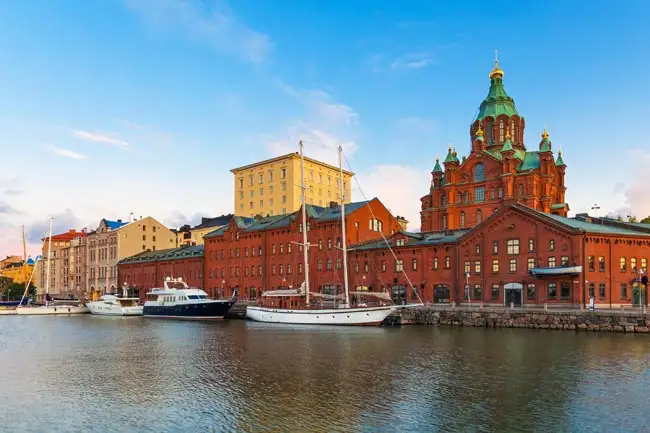
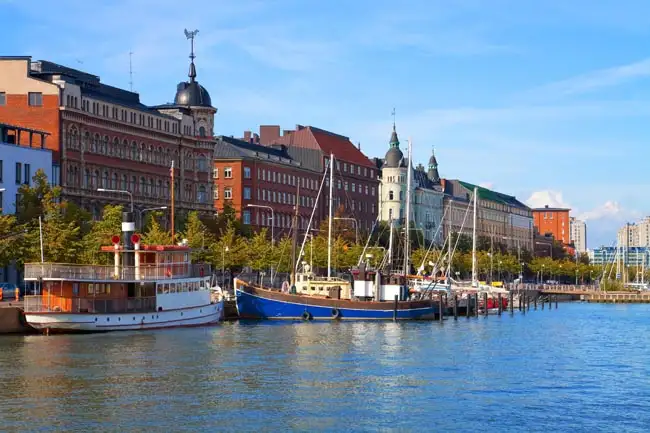
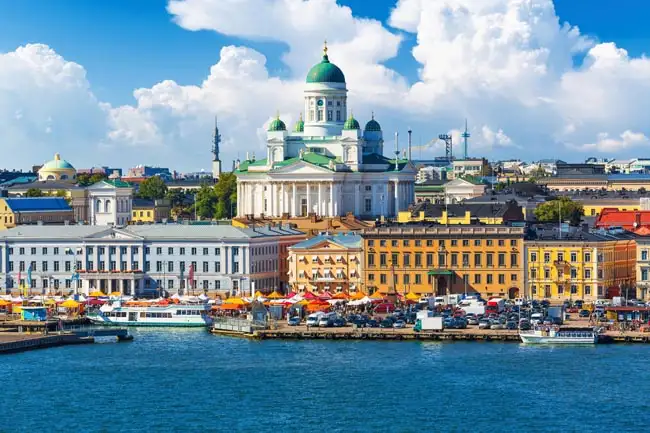
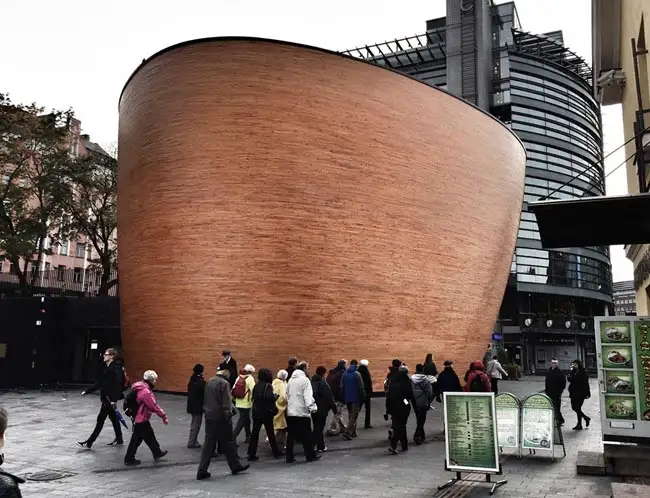
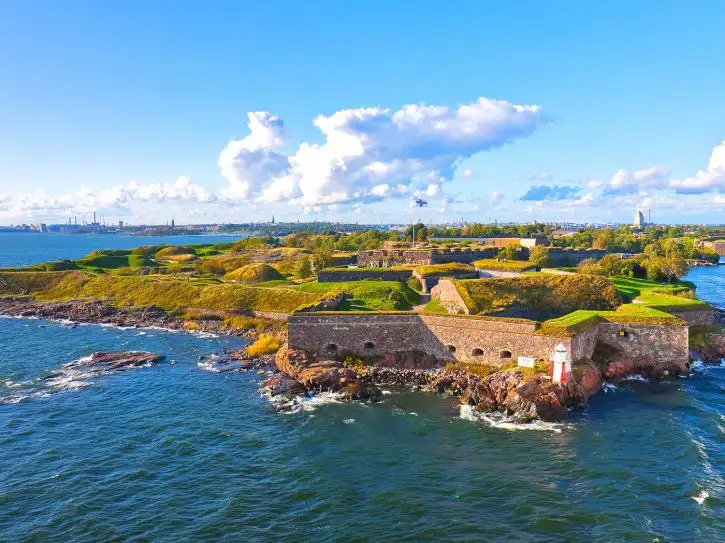
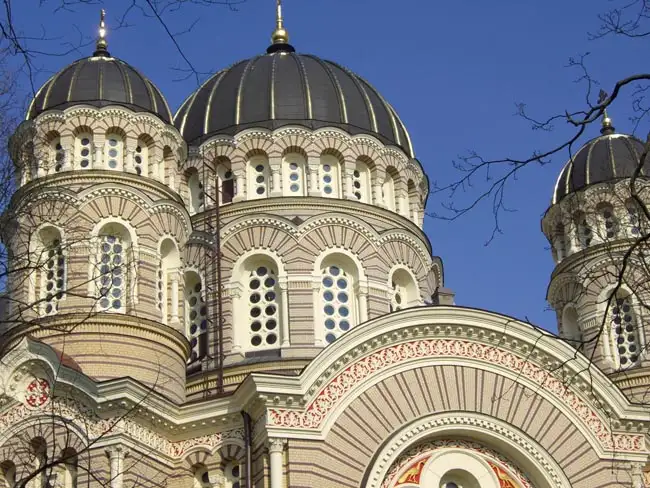
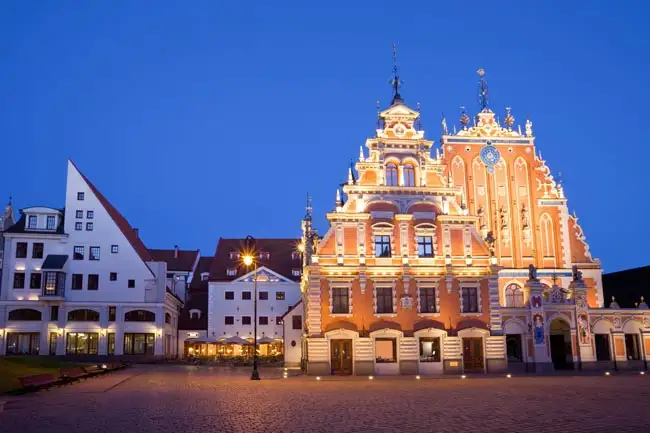
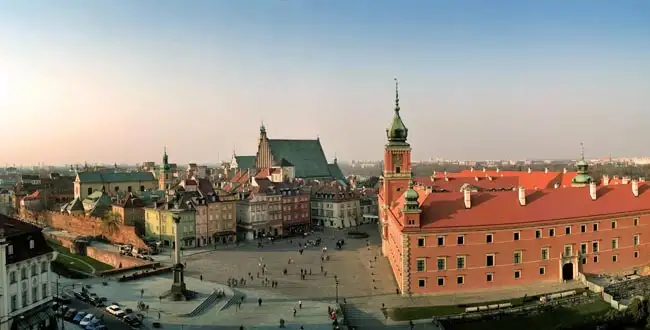
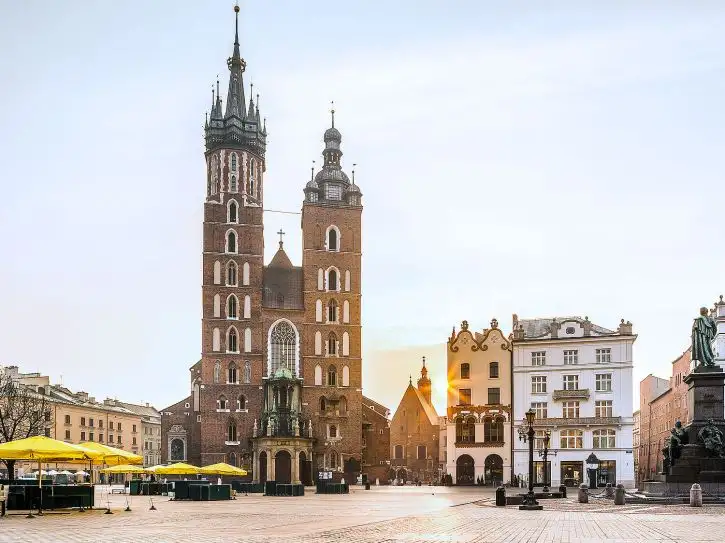
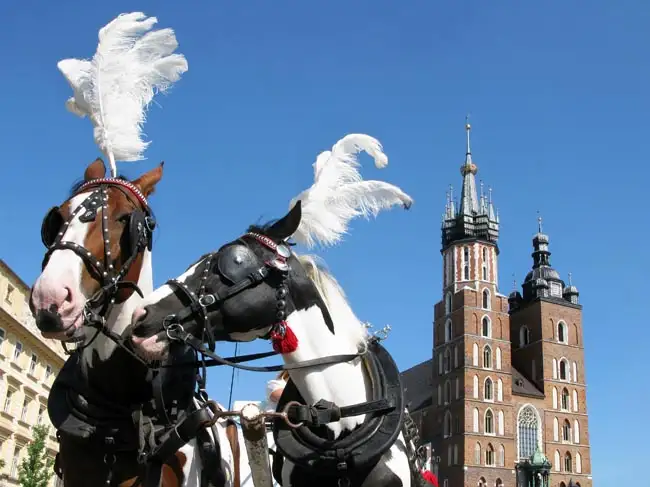
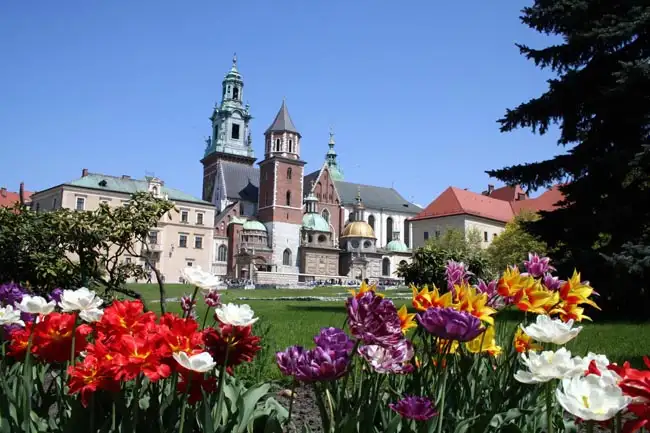
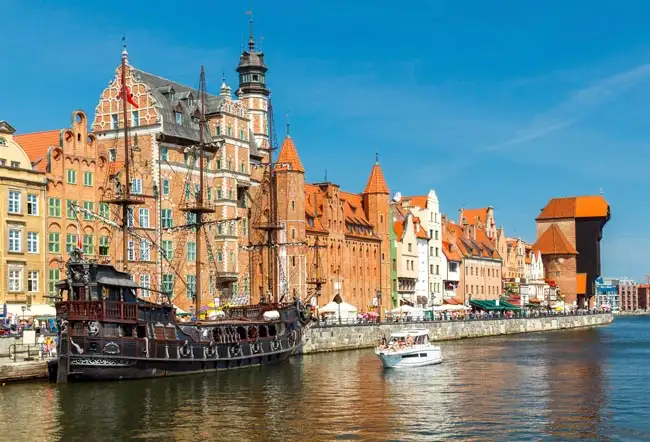
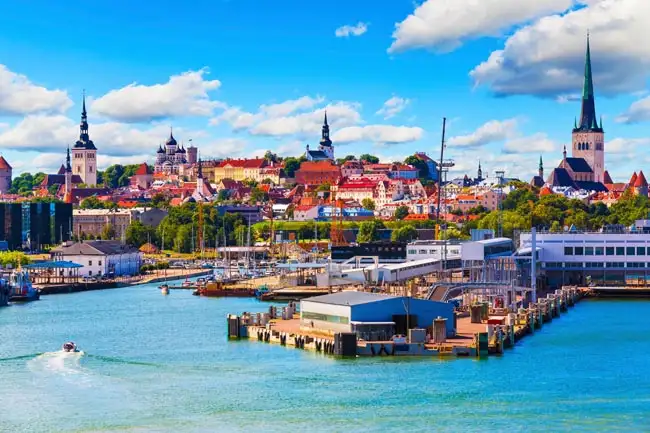
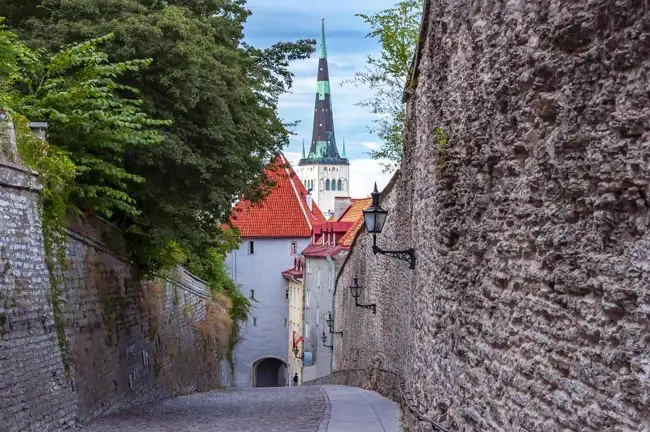
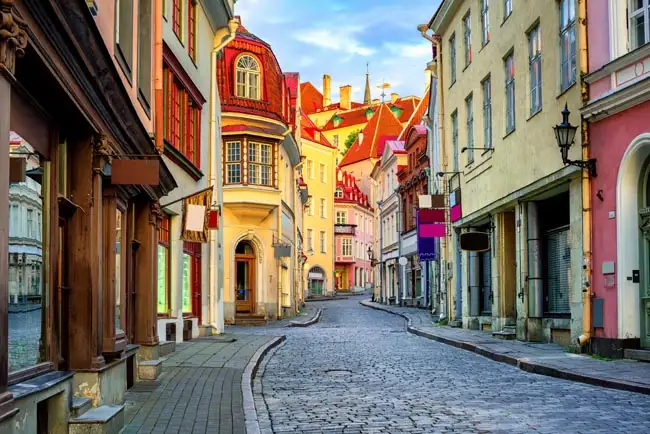
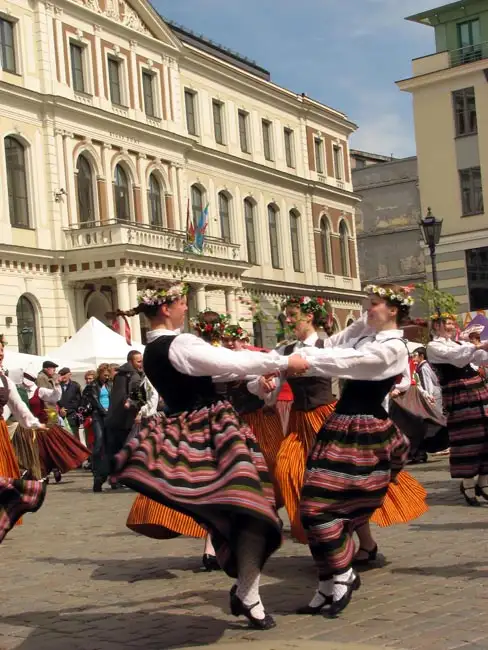
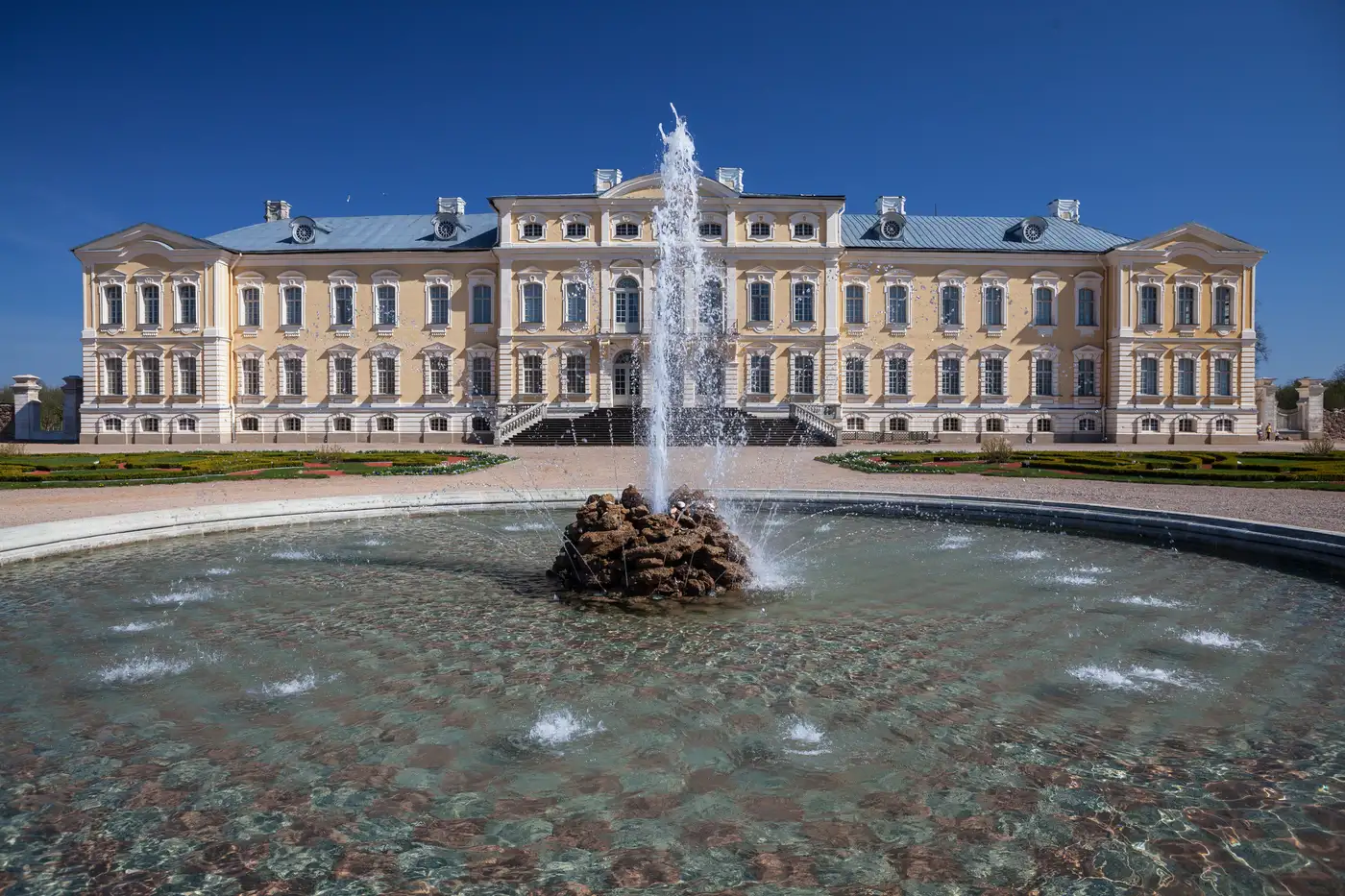
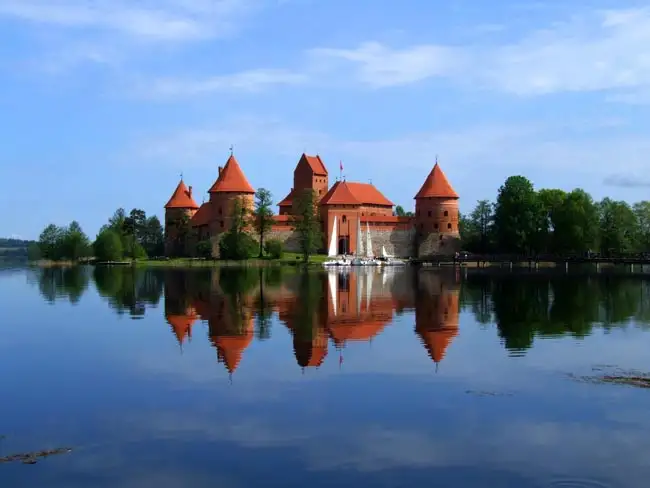
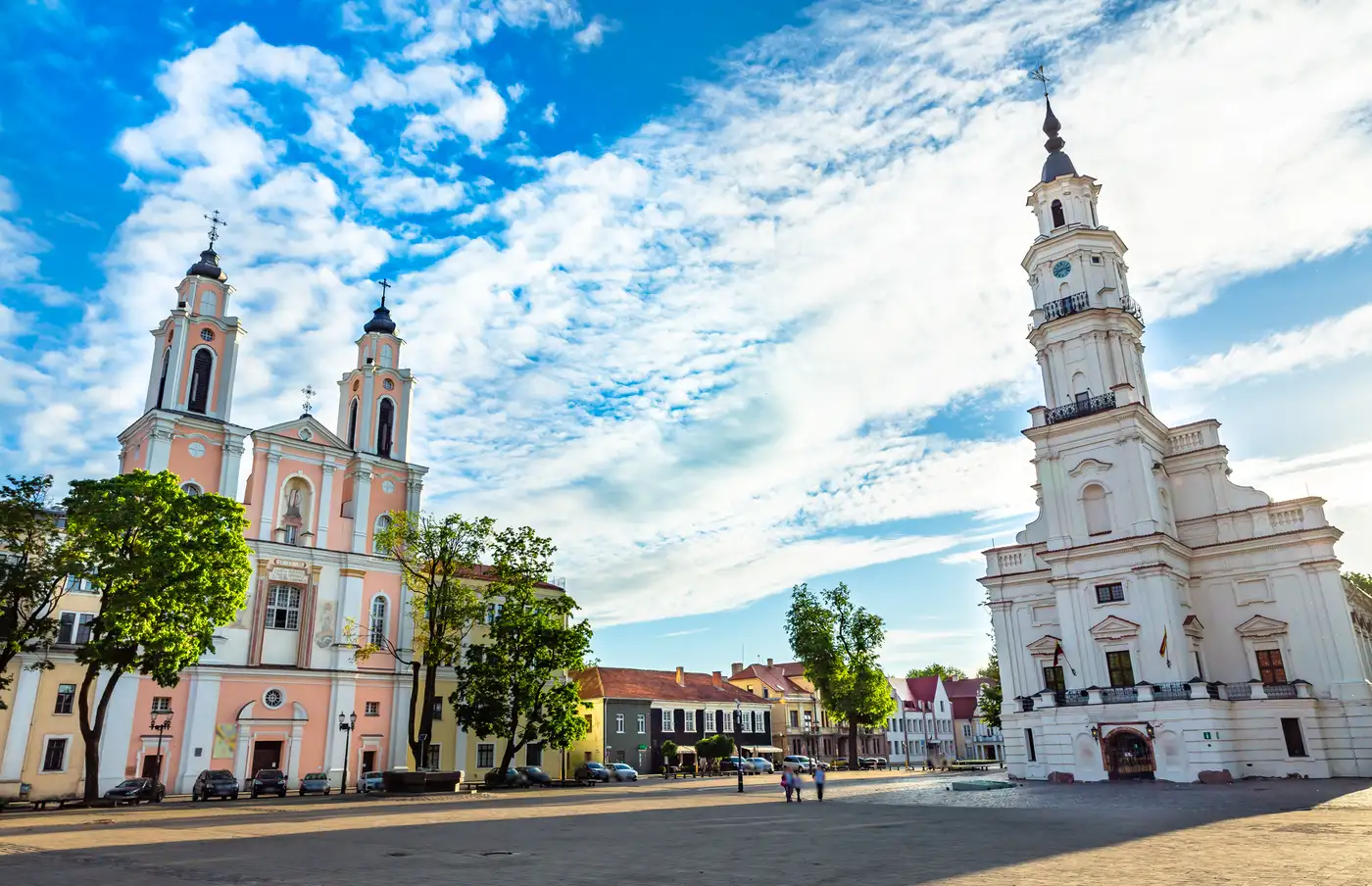
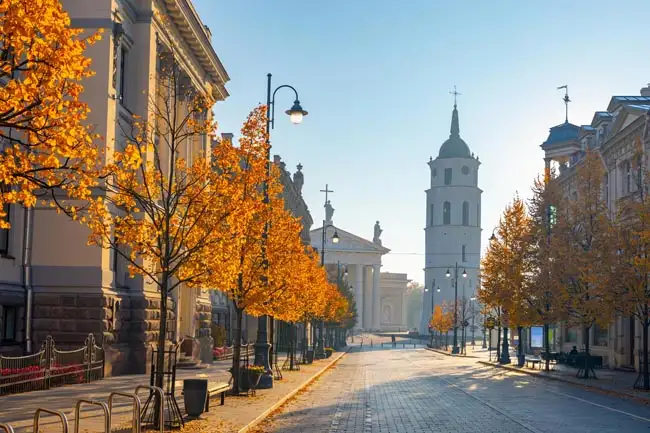
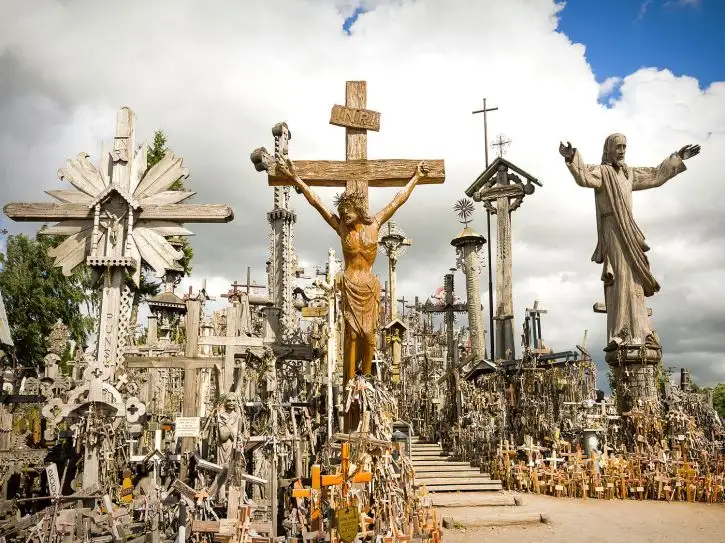
Excellent
Overall Rating
4.6
Extend Your Trip
This tour is part of a series that can be upgraded to make for a longer trip.

Fast and easy
Book this tour
Book your unforgettable adventure today! For any questions or advice, don't hesitate to contact us.
Have questions?
Contact Us
1-800-665-3998
- Final payment is due 90 days prior to departure.
- A non-refundable $500 USD deposit is payable at the time of booking
- Optional Single Supplement: $1330 USD (number of singles limited).
This tour may require a mandatory single supplement charge of $670 USD if you join our share program and we are unable to pair you. - Transferring to another tour or tour date is only permissible outside of 120 days prior to departure and is subject to a $100 USD change fee. (Read our cancellation policy for more info.)
Prices below are per person, twin-sharing costs in US Dollars (USD). Pricing does not include airfare to/from the tour and any applicable taxes. Get general information on flights to/from the tour.
Choose your departure date:
Frequently Asked Questions
- What is the maximum number of participants on a trip?Most of our tours carry a maximum of 18 participants; some tours (ie hiking tours) top out at 16. In the event that we do not achieve our minimum complement by our 90-day deadline, we may offer group members the option of paying a "small-group surcharge" as an alternative to cancellation. If all group members agree, we will confirm the trip at existing numbers; this surcharge is refundable in the event that we ultimately achieve our regular minimum. If the small group surcharge is not accepted, we will offer a refund of your deposit or a different trip of your choice.
- Can I extend my tour either at the beginning or end? What about stopovers?Yes, you can extend your tour either at the beginning or the end and we can book accommodation in our tour hotel. Stopovers are often permitted, depending on air routing. Stopovers usually carry a "stopover" fee levied by the airline.
- How do I make a reservation? How and when do I pay?The easiest way to make a reservation is via our website; during office hours, you are also more than welcome to contact us by telephone.
A non-refundable deposit is payable at the time of booking; if a reservation is made within 90 days, full payment is required. Some trips require a larger deposit. If international airline bookings require a non-refundable payment in order to secure space or the lowest available fare, we will require an increase in deposit equal to the cost of the ticket(s).
Early enrolment is always encouraged as group size is limited and some trips require greater preparation time.
Once we have received your deposit, we will confirm your space and send you a confirmation package containing your trip itinerary, any visa/travel permit related documents, invoice, clothing and equipment recommendations, general information on your destination(s), and forms for you to complete, sign and return to us. Your air e-tickets (if applicable), final hotel list, final trip itinerary, and instructions on how to join your tour, will be sent approximately 2-3 weeks prior to departure. - What about cancellations, refunds, and transfers?Please review our cancellation policy page for details.
- I am a single who prefers my own room. What is a single supplement?All of our tours have a single supplement for those who want to be guaranteed their own room at each location.
This supplement is a reflection of the fact that most hotels around the world do not discount the regular twin-share rate for a room by 50% for only one person occupying a room. Most hotels will give a break on the price, but usually in the range of 25-30% of the twin-share rate. This difference, multiplied by each night, amounts to the single supplement.
The conventional amount can also vary from country to country and some destinations are more expensive than others for single occupancy. In order to be "single friendly," the supplements we apply are not a profit centre for us and we do our best to keep them as reasonable as possible.
On most tours we limit the number of singles available, not to be punitive, but rather because many hotels allow for only a limited number of singles; some smaller hotels at remote locations also have a limited number of single rooms available.
Please note that most single rooms around the world are smaller than twin-share rooms and will likely have only one bed. - Do you have a shared accommodation program?Yes! If you are single traveller and are willing to share, we will do our best to pair you with a same-gender roommate. On most of our tours, if we fail to pair you, we will absorb the single supplement fee and you will default to a single room at no extra charge. At some destinations, however, where single rooms are not significantly discounted, or not at all, we may apply a "mandatory" single in the event that we cannot find you a share partner. This is usually 50% of the usual supplement, but can be as much as 100%. If applicable, this proviso will be noted on each tour page on this website, on your invoice, and in our tour date/price book (available for download under "Resources").
Please choose a departure date!
DATES & PRICES
